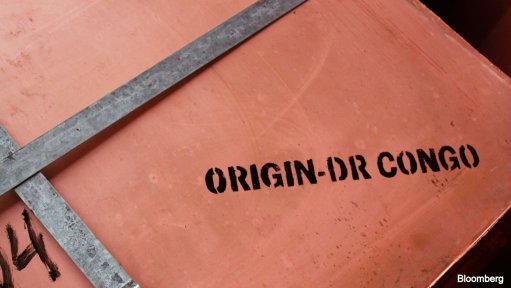Diamond industry’s famous hungry crocodile doesn't cut it
LONDON – The diamond industry’s most famous chart is the hungry crocodile, the ancient reptile’s jaws wide open, reflecting both a predicted shortage of gems and the inevitable price rises that will come with it.
Not only has this chart, which has been an industry staple for more than a decade and promoted by big miners like BHP Billiton, Rio Tinto Group and De Beers, never materialized, it oversimplifies the fact that the industry’s 15,000 different categories of diamonds are performing in very different ways.
That divergent trend has accelerated in the past year. Last month, a mine producing lower quality stones was shut due to a dip in prices, while top producer De Beers has been forced to offer unprecedented concessions to its customers. Both events show the chart is less relevant today than ever before.
“Miners have all used the open crocodile graph to justify their business case,” said Anish Aggarwal, a partner at Gemdax in Antwerp. “A greater degree of granularity is needed now to look at what the demand and supply looks like for each particular project.”
Over the past year, rough diamond prices have risen 8%. But that’s a very misleading guide if you’re producing a higher percentage of lower-quality stones which have underperformed the wider market, with some categories of cheap diamonds falling as much as 20%.
Lower quality diamonds have been hit for various reasons – too much supply, lower profit margins in major cutting centers such as Surat in India, and Indian Prime Minister Narendra Modi’s fight against so-called black money which cut liquidity to the lower end of the market. The cheaper stones are also more at risk from the emergence of man-made gems.
In response, De Beers has had to offer concessions to buyers of lower quality stones in recent sales to support the market. At the same time, the company raised prices as much as 4% in its January sale for some higher quality goods, according to people familiar with the situation, exacerbating the spread.
Firestone Diamonds said Tuesday that while the overall market remains difficult, prices for larger and better quality diamonds remain strong.
GHAGHOO SHUT
Gem Diamonds last month said it was shutting its newly built Ghaghoo mine in Botswana, a producer of lower quality stones, saying prices had fallen a third to $142 /ct since 2015. In contrast, its Letseng mine sells diamonds at an average price of almost $2 000 /ct, the highest in the industry.
“In most commodities there’s a homogeneity; that doesn’t exist in diamonds,” said Clifford Elphick, CEO of Gem. “When you talk to investors about the thousands of different categories of diamonds you see their eyes glaze over. It’s just too complicated.”
Both Aggarwal and Elphick say the lower end of the diamond market is now rebounding and that category of stones won’t always underperform.
The diamond industry is heavily dependent on seven giant mines, all aging. While most mines produce a broad spectrum of diamonds they are anything but equal.
Rio Tinto’s Argyle mine in Australia is one of the world’s biggest and produced about 14-million carats last year, but the gems are among the world’s cheapest at about $20 /ct. Jwaneng, owned by De Beers and the world’s biggest mine, sits somewhere in the middle with production of about 12-million carats at an average price of about $250 /ct.
That means that too much of a miner’s valuation is driven by how cost effectively they produce the stones, rather than the demand for their production and how they can add value by marketing and selling their stones, Gemdax’s Aggarwal said.
“When you’re looking at a project you’re tempted to use a generic pricing model,” he said. “The one thing that’s missing is that the different segments of the diamond market are not being modeled.”
Comments
Press Office
Announcements
What's On
Subscribe to improve your user experience...
Option 1 (equivalent of R125 a month):
Receive a weekly copy of Creamer Media's Engineering News & Mining Weekly magazine
(print copy for those in South Africa and e-magazine for those outside of South Africa)
Receive daily email newsletters
Access to full search results
Access archive of magazine back copies
Access to Projects in Progress
Access to ONE Research Report of your choice in PDF format
Option 2 (equivalent of R375 a month):
All benefits from Option 1
PLUS
Access to Creamer Media's Research Channel Africa for ALL Research Reports, in PDF format, on various industrial and mining sectors
including Electricity; Water; Energy Transition; Hydrogen; Roads, Rail and Ports; Coal; Gold; Platinum; Battery Metals; etc.
Already a subscriber?
Forgotten your password?
Receive weekly copy of Creamer Media's Engineering News & Mining Weekly magazine (print copy for those in South Africa and e-magazine for those outside of South Africa)
➕
Recieve daily email newsletters
➕
Access to full search results
➕
Access archive of magazine back copies
➕
Access to Projects in Progress
➕
Access to ONE Research Report of your choice in PDF format
RESEARCH CHANNEL AFRICA
R4500 (equivalent of R375 a month)
SUBSCRIBEAll benefits from Option 1
➕
Access to Creamer Media's Research Channel Africa for ALL Research Reports on various industrial and mining sectors, in PDF format, including on:
Electricity
➕
Water
➕
Energy Transition
➕
Hydrogen
➕
Roads, Rail and Ports
➕
Coal
➕
Gold
➕
Platinum
➕
Battery Metals
➕
etc.
Receive all benefits from Option 1 or Option 2 delivered to numerous people at your company
➕
Multiple User names and Passwords for simultaneous log-ins
➕
Intranet integration access to all in your organisation


















